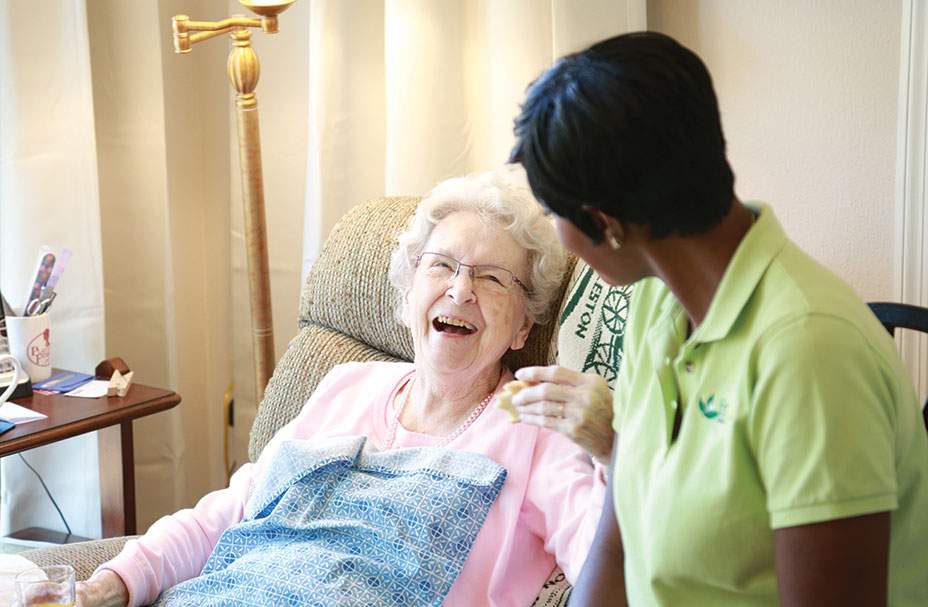Handwashing With Soap Kills Coronavirus!
This article is reprinted with some modifications with permission from the Home Care Association Of America (HCAOA), of which FirstLight Home Care is a member.
Handwashing and social distancing are the two most effective ways to prevent you from getting and spreading the infection.
Size of Virus Matters – So Does Soap!
Steven C Fox D. O.
The COVID-19 virus is almost unimaginably small. If you compared it to the size of a single human skin cell, COVID-19 would be the size of a jellybean on top of second base. The cell would be the size of a major league baseball stadium. What this means is that no face mask, even the surgical N95 type offers complete protection. The protection that facemasks do provide is by catching the aerosol droplets from an infected patient. Their benefit is reduced by reusing them and they’re likely to be useless if the person doesn’t practice appropriate personal hygiene such as frequent and correct handwashing.
Handwashing and social distancing are the two most effective ways to prevent you from getting and spreading the infection. Handwashing with plain old soap and water actually destroys the chemical structure of the virus. The outside coating of the virus is sticky and oily—the soap breaks this layer apart. Then the water rushes through the breaks to the layer below which mixes with the water and essentially breaks apart the entire shell, killing the virus.
Handwashing 101 — To Kill Coronavirus
First wet your hands, hot or cold, it doesn’t matter. Thoroughly rub soap over your hands including your thumbs, between your fingers and fingertips. Rub all areas of your hands including the back of your hands for at least 30 seconds (sing ‘Happy Birthday’ twice). Dry thoroughly preferably with disposable towels. If soap and water are not available, use hand sanitizer but don’t wipe it off. Let it air dry.
As to how often you should wash your hands, if you think about it, you should do it. At a minimum, before and after you’ve touched any surface, particularly metal surfaces outside the house. At home, before and after using the washroom, preparing food or assisting a family member with some personal care.
All of this extra handwashing can dry out the skin on your hands. So, as well as washing regularly, make sure to moisturize your hands as well.
Self-Monitoring To Avoid Spreading Coronavirus
Self monitoring is another important step everyone should take as we Shelter in Place. This is particularly important in those households where someone is considered an essential worker who will have more community exposure. The Centers for Disease Control and Prevention
CDC defines self-monitoring as follows:
Self-monitoring means people should monitor themselves for fever by taking their temperature twice a day and remain alert for a cough or difficulty breathing. If they feel feverish or develop measured fever, cough, or difficult breathing during the self-monitoring period, they should self-isolate, limit contact with others, and seek advice by telephone from a healthcare provider or their local health department to determine whether medical evaluation is needed.
A fever (temperature of 100 degrees Fahrenheit or more) is seen in almost 90% of COVID-19 infected individuals. Even with a fever, it is important to determine whether the symptoms are due to the common cold, the flu, allergies or COVID-19 infection.
If you have a stuffy/ runny nose and are sneezing, you likely don’t have COVID-19. If you have in addition, itchy or burning eyes it’s most likely a seasonal allergy. COVID-19 and the flu both come on suddenly. They both can start with fever, dry cough, muscle aches and some fatigue. Having a headache and sore throat are more likely symptoms of the flu.
If you are still unsure if it’s the flu or COVID-19, you should isolate yourself in your home immediately. This means staying in a room by yourself. If possible, not sharing a bathroom and staying away from other family members. You should wear a face mask to prevent spreading aerosol droplets to others. In addition to handwashing, sanitizing and cleaning surfaces is essential.
Testing for Coronavirus: If and When
While testing can confirm exposure and possible infection with COVID-19, a positive test result will not markedly change the care or treatment you receive. Medical care and treatment and even the place of the treatment is based upon the severity of the symptoms the person is experiencing.
A recommendation or a requirement for the immediate testing should be based upon the local availability of testing, healthcare provider, State and local public health guidelines.
Local Health Department Lists For Coronavirus Guidance
The National Association of County and City Health Officials (NACCHO) has compiled a list of local health departments to help people with questions or concerns related to COVID-19.
Coronavirus Testing Priorities Announced
The CDC has compiled guidelines for classifying who receives COVID testing and the New York Times is compiling an interactive guide to which states have shelter-in-place orders.
